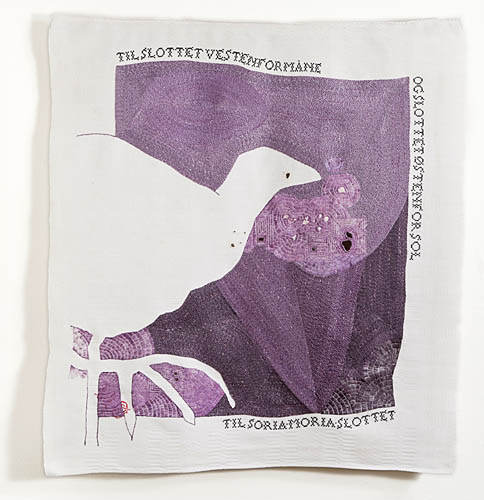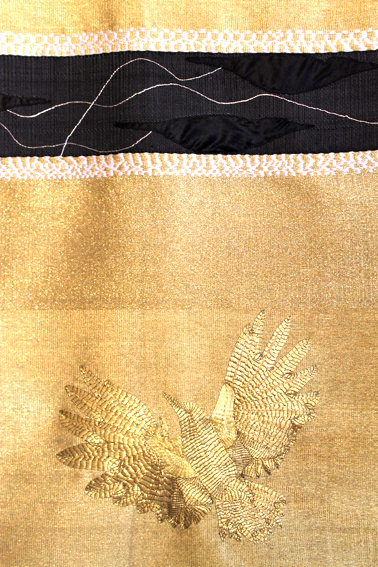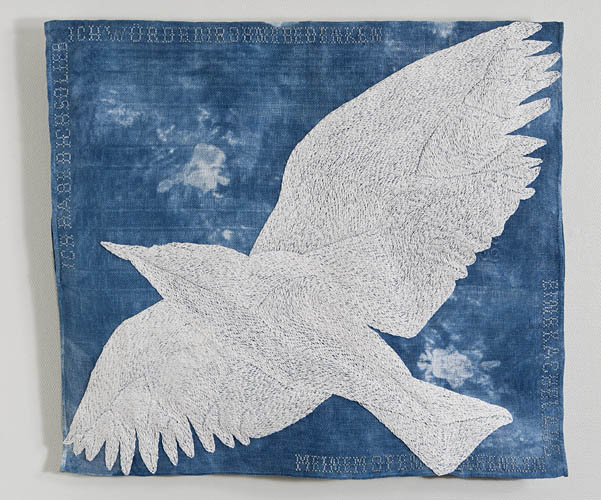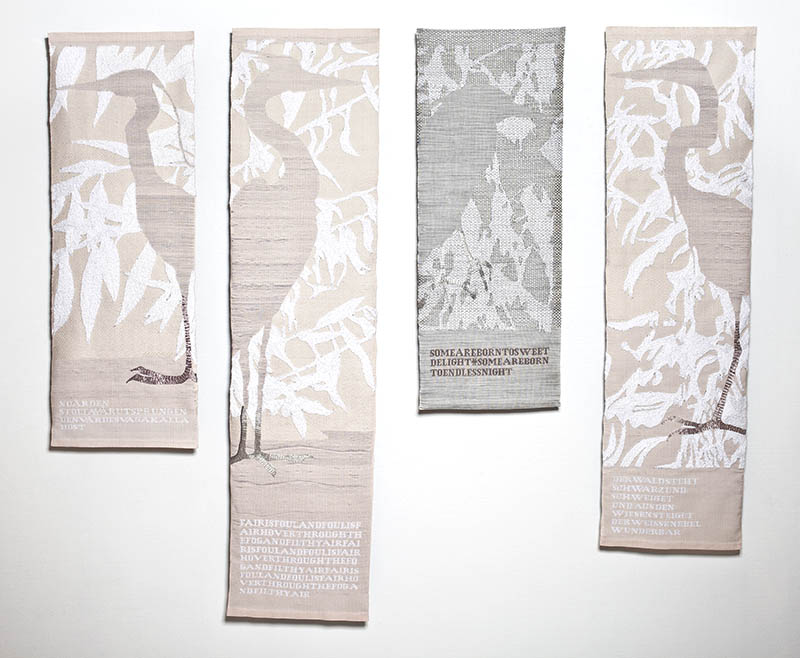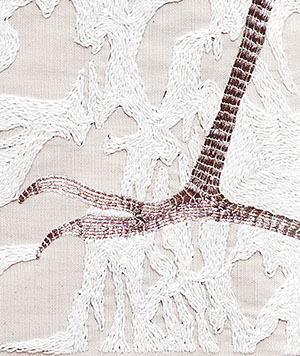Birds and their names
I grew up in a family with great interest in birds - especially migratory birds. (The latter was probably a consequence of a childhood in Eastern Germany.)
Before I could identify a certain bird by its shape I was often already familiar with its name. Those names evoked images in my young mind. Later I found out that those images very often differed from the actual appearance of the bird.
In Danish there is a word for translating intentionally wrong: undersættelse – in English this could be something like “dislation” (in contrast to translation).
My work initiates with bird names. The essential thing for me in that process is to keep to the image evoked by the name of the bird – instead of translating it correctly and at the same time loosing that image. Therefore, the title of my work normally contains expressions in two languages – a bird name and its “dislation”.
Connection between text and textile
I read about Mary Queen of Scots (1542 - 1587) using embroidered emblems¹ for sending coded messages. Those emblems reached their destination without being deciphered by the security service of Elisabeth I (1533 – 1603) - but with unsatisfactory results.²
Later I discovered one such emblem at the Victoria & Albert Museum and more in a book³.
What made a deeper impression on me, though, were her embroidered representations of birds and other animals. Those representations were shown at the same exhibition; they were based on Conrad Gesner4 copperplate engravings. As far as I know they are not classified as proper emblems. But in contrast to Gesner, Mary Queen of Scots used four different languages - English, Scottish, French and Latin – from which she chose the name she labeled to each of those birds or animals represented in her embroidery. From this I got the impression that she thus expressed some personal relationship either to that bird or to other beings connected to the animal. It is my personal hypothesis which I cannot prove that those animal pictures are sophisticated emblems.
Instead of trying to prove this hypothesis, I apply the method which I suspect Mary Queen of Scots used.
¹ The 1531 publication in Augsburg of the first emblem book, the Emblemata of the Italian lawyer Andrea Alciato launched a fascination with emblems that lasted two centuries and touched most countries of western Europe. "Emblem" in this sense refers to a didactic or moralizing combination of picture and text intended to draw the reader into a self-reflective examination of his or her own life. (Wikipedia)
² Rozsika Parker: “The Subversive stitch” – Embroidery and the making of the Feminine
³ Margaret Swain: “The Needlework of Mary Queen of Scots”
4 Conrad Gesner (1516 – 1565) was a Swiss naturalist and bibliographer. His five-volume Historiae animalium
(1551-1558) is considered the beginning of modern zoology. (Wikipedia) |
